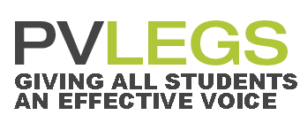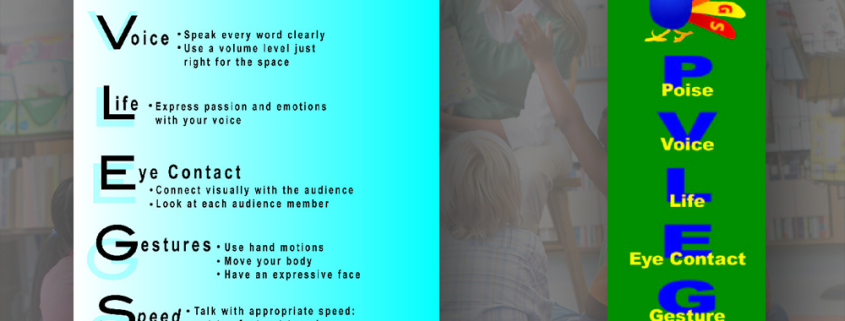The PVLEGS© STORY
/0 Comments/in Images, The PVLEGS Story /by Erik PalmerMany years ago, I came into teaching after a career in business. When I started, I followed the lead of the veteran teachers on my team who required book reports quarterly and a major research project with an oral presentation annually. Though in upper grades and with, presumably, years of book reports and in-class speeches behind them, the students were generally boring. That may be harsh, but it was nonetheless accurate. I was amazed at how polite the students were listening given the lack of presentation skills of the speakers.
Though all of the teachers had the same speaking assignments on my team, no two of them had the same score sheet. Take the big research presentation speech, for example. In one class, eye contact was worth 10 points, content was worth 25, the visual aid was worth 15, and so on; in another class, content was worth 100, speaking loudly was worth 10, using note cards was worth 10, a poster was worth 25. We had no agreement about the total points on the speech and, more importantly, no agreement on what items should be given points. Eye contact counted in one class but not in another; standing straight got points in one class only; speaking loud was scored by three of the five teachers… you get the idea. (And it is probably the same at your school.)
No wonder students didn’t speak well. There was no consistency of expectations. There was no clear idea of what it took to succeed. There was no logical explanation of the skills required to communicate effectively. So I took on the job of coming up with a clear, logical, understandable, useful way of explaining the art of oral communication.
I wanted better presentations, but I also wanted better speaking in class discussions, better explanations of solutions demonstrated at the board, and better speaking in general. I wanted a framework that would work for all speaking. What can be said of great speakers? They are poised; they have voices that allow every word to be heard; they have life and emotion in their voices; they make eye contact with the audience; they use hand, face, and body gestures to enhance the message; and they use speed and pacing for effect. If anyone masters those, he will be able to effectively deliver any speech. That’s it. That will be necessary and sufficient.
So I wrote on the chalkboard:
Poise
Voice
Life
Eye contact
Gestures
Speed
One student called out, “P V Legs!” and the acronym stuck. I didn’t think it would become as popular as it became. I suppose ROY G. BIV is odd, but all of us use to recall the colors of the rainbow, and HOMES is used by many to remember the Great Lakes. When a high school senior reported to me that she thought of P V Legs before her presentation at DECA nationals years after being in my class, I began to be convinced of the staying power of the idea. When an adult who had picked up the acronym from a presentation said she used P V Legs to prepare for her acceptance speech of an award at a national convention of people in her profession, I became more convinced. And when I saw how all oral communication improved in my classes, I made the bookmarks and posters you see here.
(Contact me to discuss prices if you’d like some.)
[quote float=”left”]Aenean vulputate eleifend tellus. Aenean leo ligula, porttitor eu, consequat vitae, eleifend ac, enim.[/quote] Donec quam felis, ultricies nec, pellentesque eu, pretium quis, sem. Nulla consequat massa quis enim. Donec pede justo, fringilla vel, aliquet nec, vulputate eget, arcu. In enim justo, rhoncus ut, imperdiet a, venenatis vitae, justo. Nullam dictum felis eu pede mollis pretium. Integer tincidunt. Cras dapibus. Vivamus elementum semper nisi.

